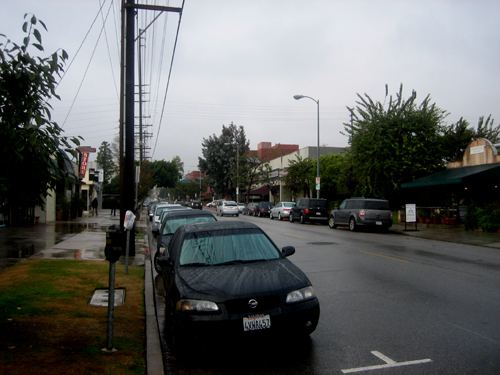

This California Fool’s Gold entry is about Little Osaka. To vote for other Southern California communities to the subjects of future explorations, please leave a comment.
Japanese Americans have long been integral to the fabric of Los Angeles. J-Towns have sprung up around the Southland in Gardena, Torrance, Boyle Heights, Pasadena, San Pedro, Terminal Island, Crenshaw, Compton, Long Beach, Monterey Park, and Sawtelle. As far as I know, only two have acquired nicknames that reflect their Japanese-ness, Little Tokyo and Little Ōsaka. The former is a well-known spot downtown.

The latter is a small district along Sawtelle Boulevard between Nebraska and Tennessee in the Sawtelle neighborhood (and former municipality) favored by Nisei, foodies, otaku, hentai, and nipponophiles. With the rainy season just beginning, my ex-roomie Shimbles and I set out to explore the neighborhood.
The first people to have lived in what’s now Los Angeles were the Chumash, whose ancestors lived in the region at least 13,000 years ago. From around 400 BCE till the arrival of the Spanish, the area around what’s today Little Osaka was known to the Tongva as Kuruvungna. In 1896, a neighborhood sprang up known as Barrett. The US postal service objected to the name, on account of its similarity to Bassett. In 1899, the name was changed to Sawtelle. In 1918, Sawtelle became part of Los Angeles. By the ’10s, the area was largely populated by Japanese Americans, and the neighborhood was often referred to by them as “Soteru.” From 1920 to ’25, the population of Sawtelle grew rapidly, from 3,500 to 10,700.

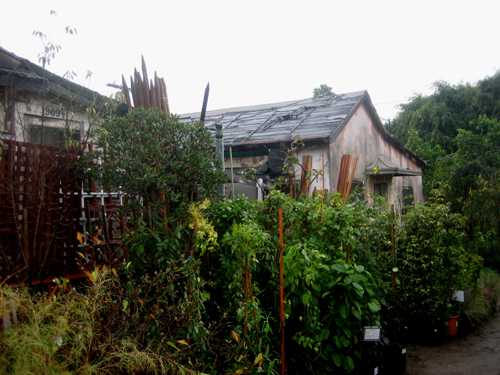
In the 1920s and ’30s, what’s now Little Osaka (小大阪) was dominated by Nikkei-run nurseries which mostly served wealthy, white Westsiders, although Sawtelle homes themselves often display more thoughtful landscaping than those in average neighborhoods. In 1931, a group of Japanese planted a Japanese garden (designed by Koichi Kawana) in Sawtelle’s Stoner Park “for the promotion of better understanding.” By 1941, there were 26 nurseries in the area. When Japanese Americans were unjustly incarcerated during World War II, the neighborhood went into decline. Today there are three nurseries remaining in Little Osaka; The Jungle, Hashimoto, and Yamaguchi Bonsai.
In the ’20s, the large Kobayakawa Boarding House was built by Riichi Ishioka on Sawtelle Boulevard, housing up to sixty people at a time. It remained in operation until the 1970s. When Japanese-Americans returned to the neighborhood after the war, Sawtelle Gakuin‘s auditorium was converted to a hostel. In 1946, Toshikazu “Tom” and Midori Yamaguchi opened the store Yamaguchi, a beloved institution in the neighborhood. Yamas remained in business until 2006, when their sons, Henry and Jack, sold it. In the late ’80s, many of the existing buildings were destroyed to make way for strip malls and offices. In the ’90s, the area began to bustle again, perhaps initially because authenticity-oriented foodies discovered the neighborhood’s Japanese American restaurants. Although most of the pre-war character of the neighborhood was by then erased, the Japanese American character remained.
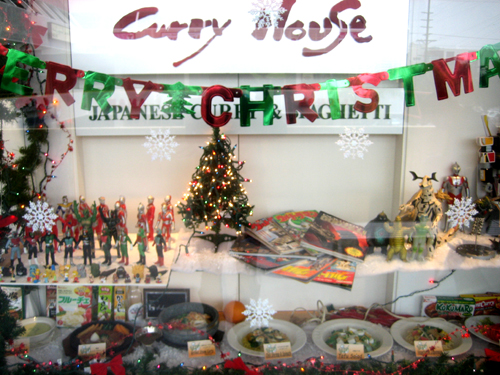
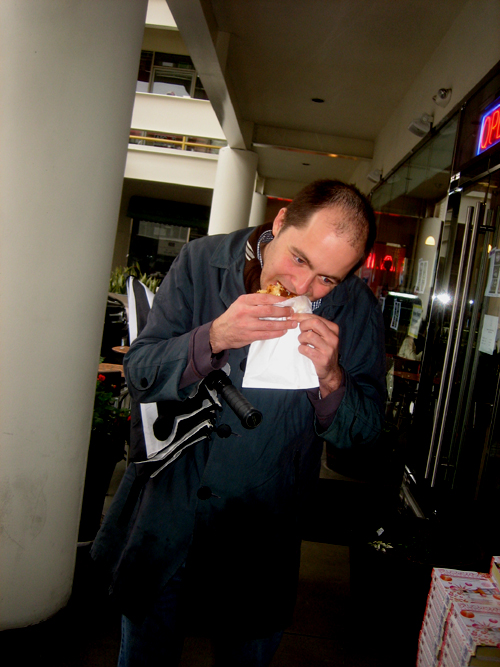
There are still multiple sushi, curry, and noodle joints — among others. I suspect the neighborhood may’ve acquired its nickname (instead of, say, Little Yokohama) because of how densely populated with eateries it is. Big Ōsaka, after all, is the city of kuidaore (“to become poor as a result of one’s extravagance in eating and drinking”). Being a cold, rainy day, I had some extra hot curry and heated sake to warm myself from the inside out. Afterward, we stopped by Beard Papa’s, a chain founded in the original Ōsaka. I ate the brand new Cookie Crunch Puff. Although my sweet tooth is dwarfed by my bitter, salty, sour, spicy, and umami teeth, it was delicious.
There haven’t been any films shot in Little Osaka that I know of, except for a couple of short youtube docs like Lianne Lin‘s I ❤ Sawtelle, the area does have a connection to Japanese film. First, it should be said that Amoeba has a very large selection of Japanese films — one of the best in the city. However, if you can’t find a Japanese movie at Amoeba, there’s a good chance they have it at Video Addict, although probably without English subtitles.

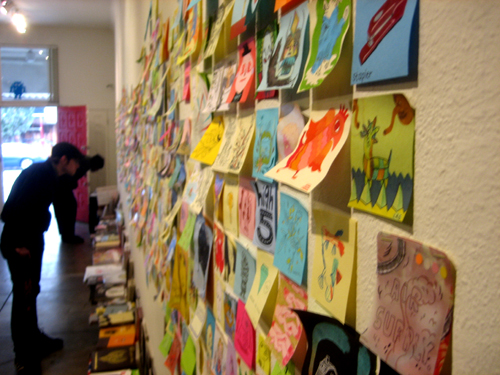
Giant Robot was started in 1994 by Eric Nakamura and Martin Wong as a magazine covering Asian and Asian American pop culture. It not only filled a void in the publishing world, but its subject matter, its humor, attitude, observation, and insight also made it one of the greatest magazines, period. They opened their first store in 2001, in Little Osaka. A few years later, they opened the art gallery, G2. We checked out The Post-It Show.

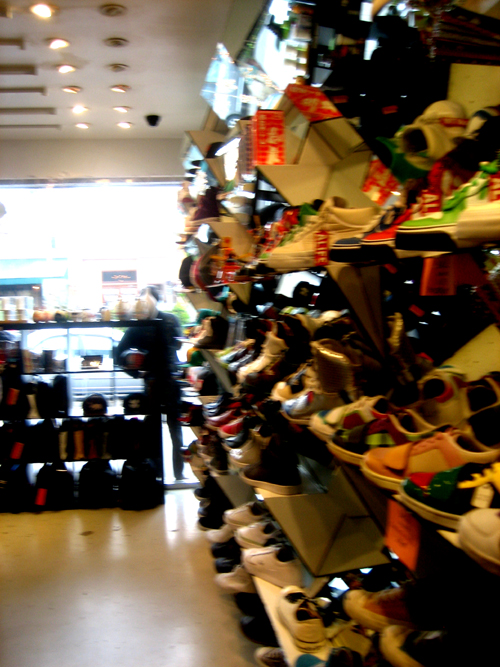
There are a lot of clothing joints in the neighborhood. As with the world outside of Milan, there are many more options for the ladies than the gents. And for the gents, most of the choices are kawaii T-shirts and outfits you’d see on kids in a jerk video.
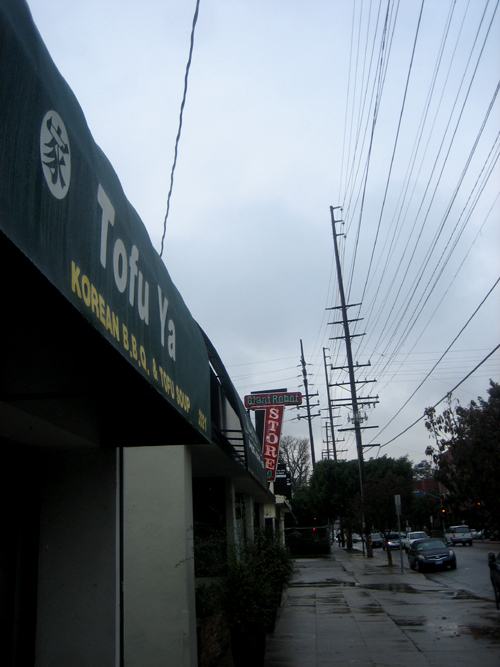
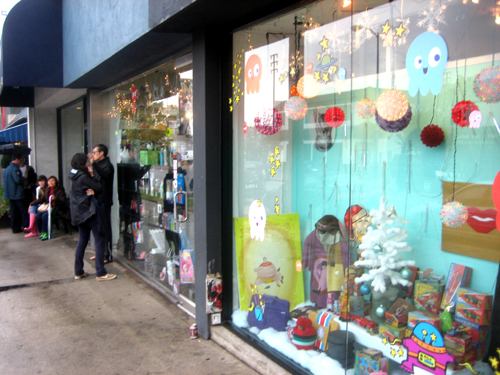
As we left Little Osaka, we crossed Nebraska and saw this creepy Brujeria omen…
Support Eric Brightwell on Patreon


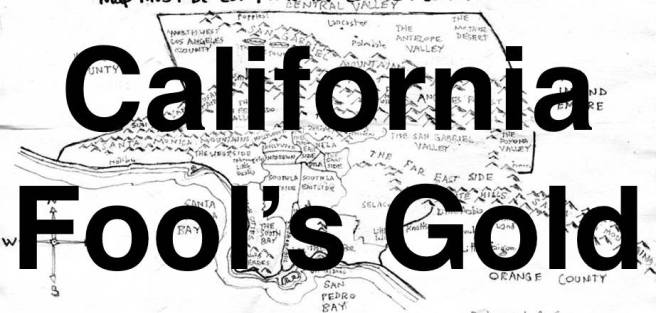




14 thoughts on “California Fool’s Gold — Exploring Little Osaka (小大阪)”